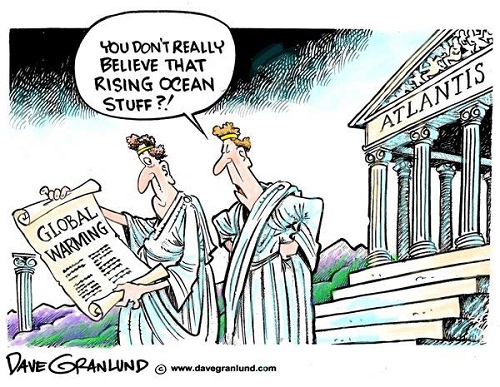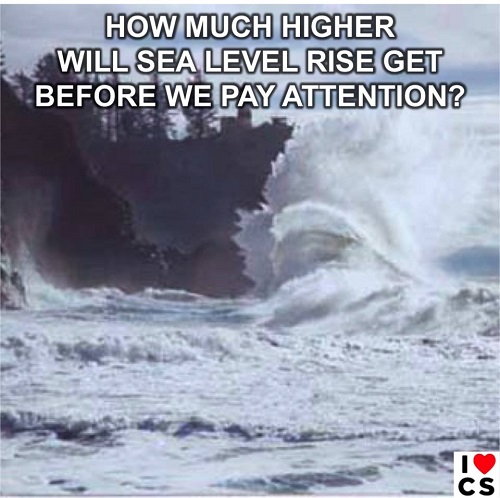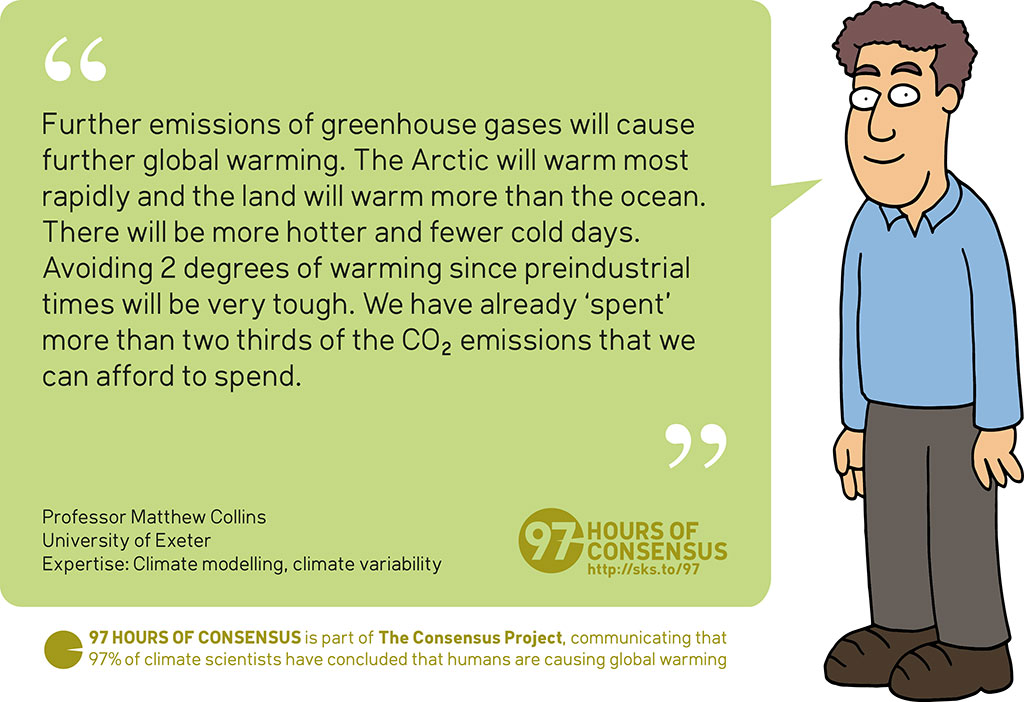
John Mason's The cause of the greatest mass-extinctions of all? Pollution (Part 1 and Part 2) generated a lively discussion among readers and attracted the most comments of the articles posted on SkS during the past week.
NOAA's Climate Prediction Center is saying that there is an approximately 50-60% chance that El Niño conditions will continue through Northern Hemisphere summer 2015. This outlook was issued before the recent record-strength MJO and counter-rotating Pacific tropical cyclones emerged, so it will interesting to see how their outlook changes in the next update on April 9.
Strongest MJO Event on Record Boosts El Niño Odds by Dr. Jeff Masters, Wunderblog, Weather Underground, Mar 18, 2015
We’re about to experience a “double El Niño” — a rare weather phenomenon that climatologists had warned about several months ago.
That means two consecutive years of the concentration of warm water in the Pacific Ocean that brings West Coast storms, quiet hurricane seasons in the Atlantic and busy ones in the Pacific. The danger is that this could mean more than a few months of odd weather, but instead usher in a new phase of climate change. Last year was the warmest year on record; 2015 looks set to be even warmer.
Welcome to the 'Double El Niño' — and more extreme weather by Jared Goyette, Living on Earth, Public Radio International (PRI), Mar 22, 2015

Hat tip to I Heart Climate Scientists
“One way of thinking about global warming from the human influences is that it's not just a gradual increase, but perhaps it's more like a staircase, and we're about to go up an extra step to a new level,” says climate scientist Kevin Trenberth of the National Center for Atmospheric Research.
Welcome to the 'Double El Niño' — and more extreme weather by Jared Goyette, Living on Earth, Public Radio International (PRI), Mar 22, 2015
In his Bad Astronomy/Slate post, Ted Cruz goes full Orwell, Phil Plait links to three SkS rebuttal articles:
In Climate science realities published in the Standard Examiner, Daniel Bedford states:
The 97 percent consensus. At least four independent peer-reviewed studies, using different methods, have found that around 95-97 percent of climate scientists or their peer-reviewed work agree that global warming is real, caused by humans, and potentially a serious threat. The most recent of these was by a multi-author team led by my friend and occasional research partner John Cook, and more than any of the others it’s attracted the ire of those dismissive of the seriousness of climate change, I suspect because of John’s ability to communicate his findings clearly and effectively to the public. Against these four peer-reviewed studies, all independently finding an overwhelming scientific consensus on climate change, Mr. Dickson prefers an opinion column from ForbesOnline.
The SkS rebuttal article, What is the link between hurricanes and global warming? is referenced and linked to by Simon Leadbetter in Cyclone Pam: a sign of worse to come posted on Blue & Green Tomorrow.
In her letter-to-the-editor, Truth in climate change published in the Lincoln Journal Star, Becky Seth writes:
The second speaker was Marlo Lewis, whose Ph.D. is in Government. Despite his lack of training in climate science, he showed many charts chosen to illustrate that the scientific consensus about human-caused climate change is wrong. In a survey of the authors of 12,000 peer-reviewed climate science articles published in journals of the profession between 1991 and 2011, with subsequent follow-up to confirm their views, it was found that 97 percent agreed that climate change is occurring and is caused by human activity. Many of the things Lewis asserted are addressed factually and thoughtfully at the website, Skeptical Science.


Quote derived with permission from author from:
"Further emissions of greenhouse gases will cause further global warming. The Arctic will warm most rapidly and the land will warm more than the ocean. There will be more hotter and fewer cold days. Mid-latitude areas that currently experience high rainfall will get more. Sea levels will continue to rise and snow and ice will melt back. If we follow the highest scenario of future greenhouse gases, the Arctic is expected to be ice-free before the middle of the 21st century. “Avoiding 2 degrees of warming since preindustrial times will be very tough. We have already ‘spent’ more than two thirds of the CO2 emissions that we can afford to spend."
Posted by John Hartz on Sunday, 22 March, 2015
 |
The Skeptical Science website by Skeptical Science is licensed under a Creative Commons Attribution 3.0 Unported License. |